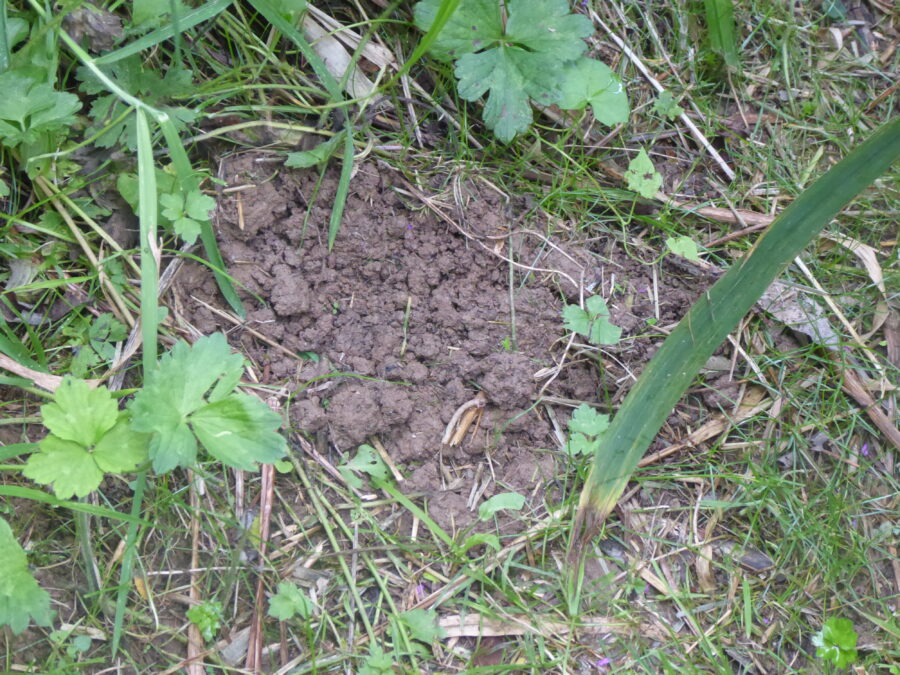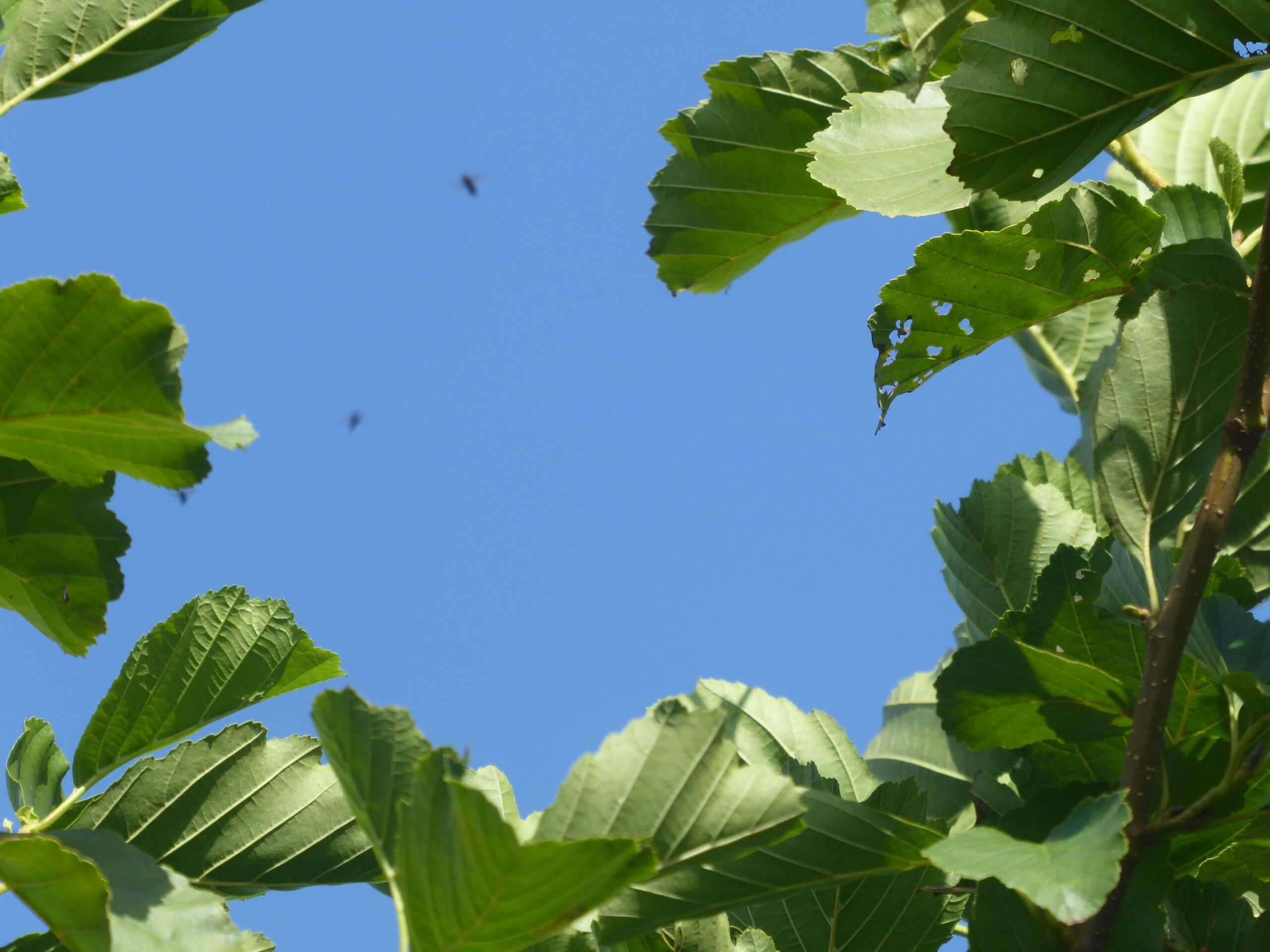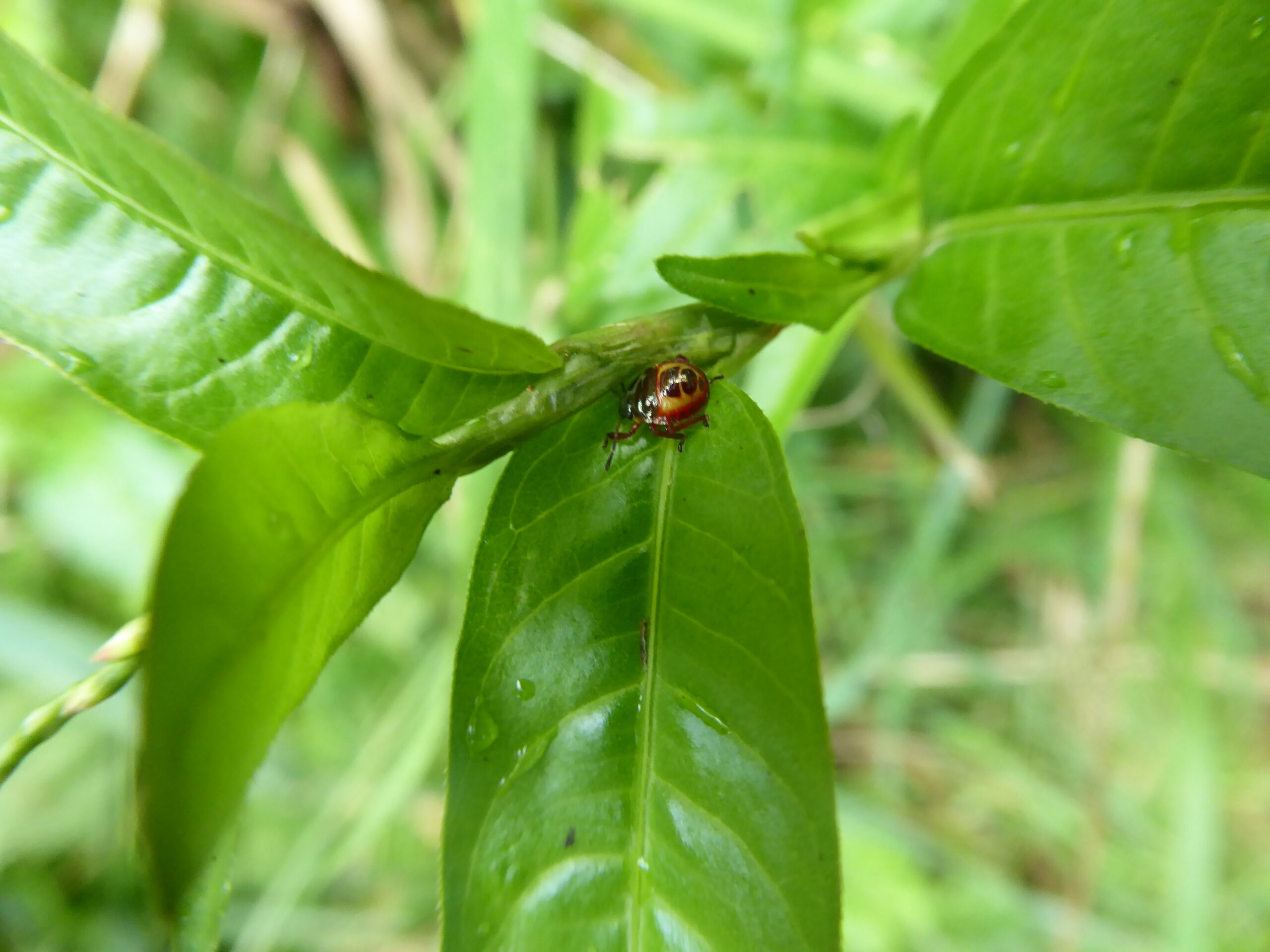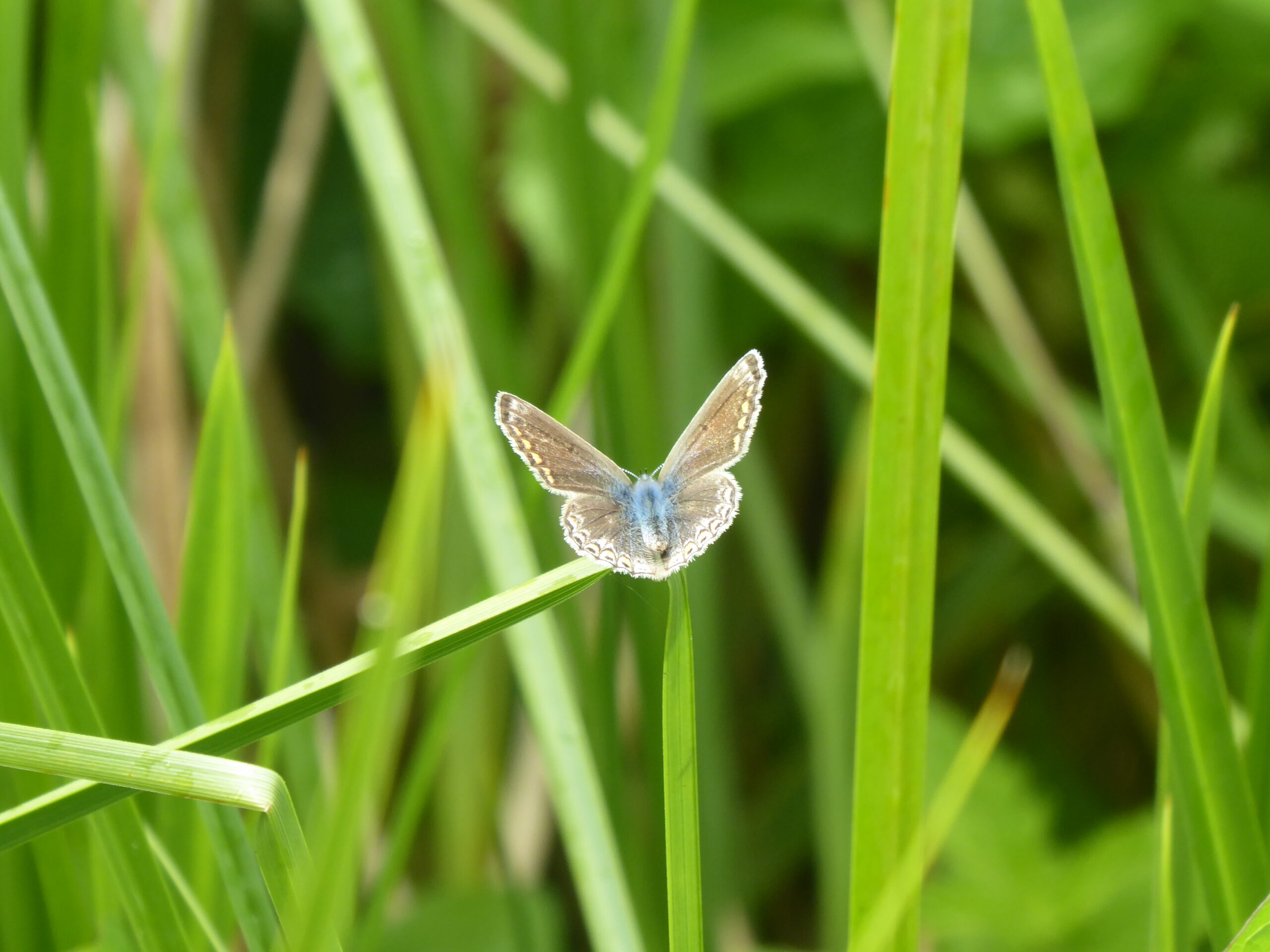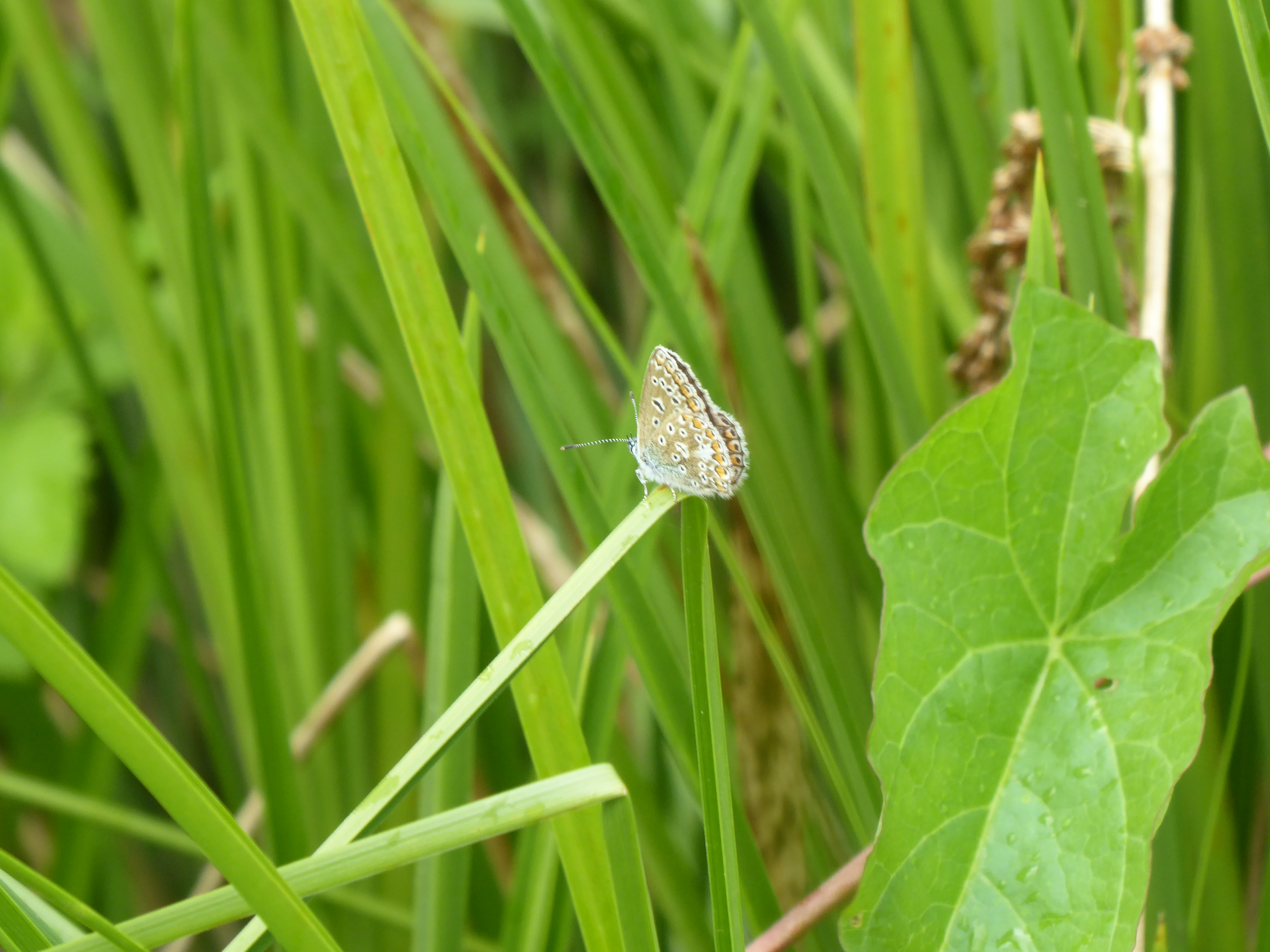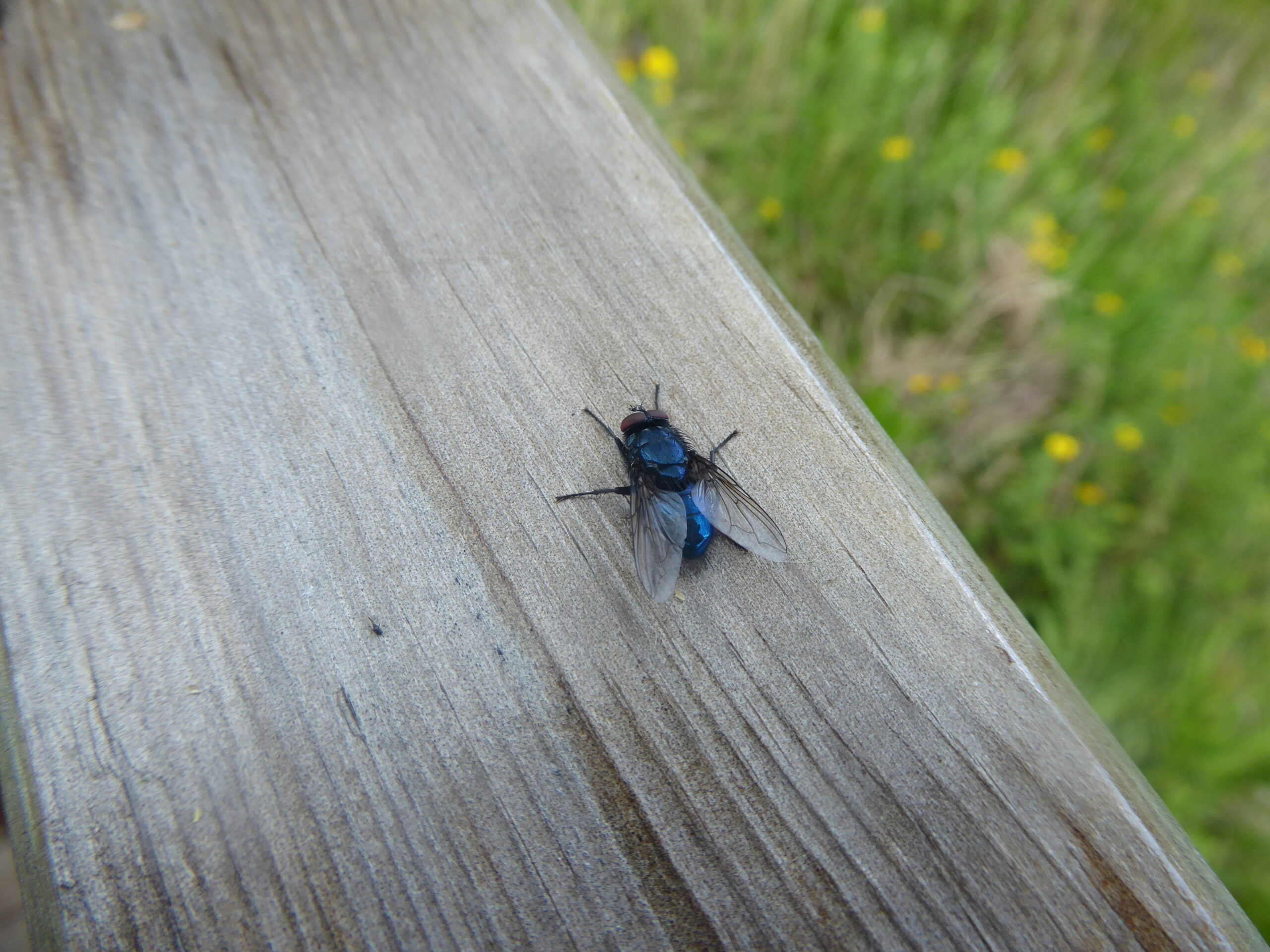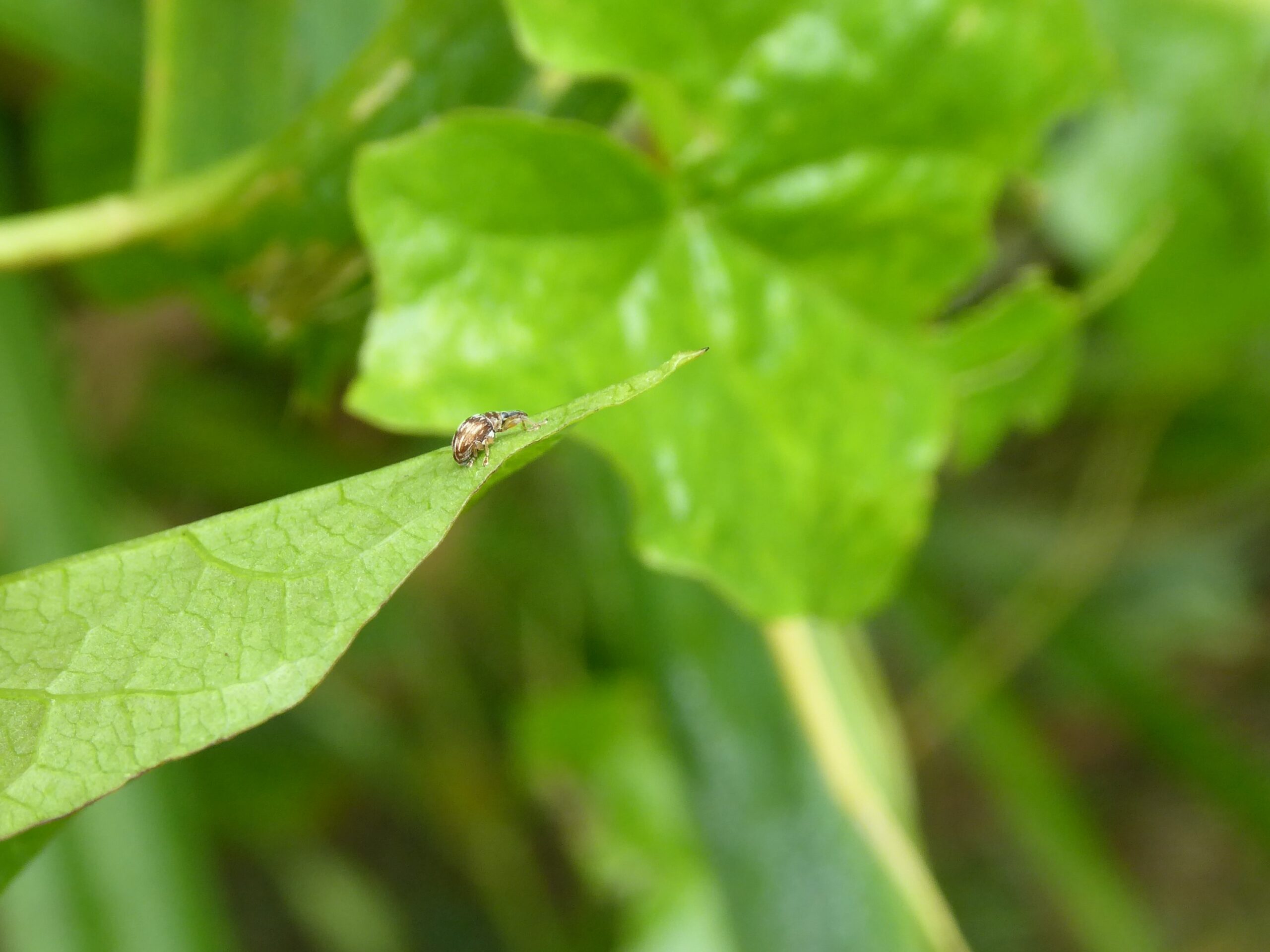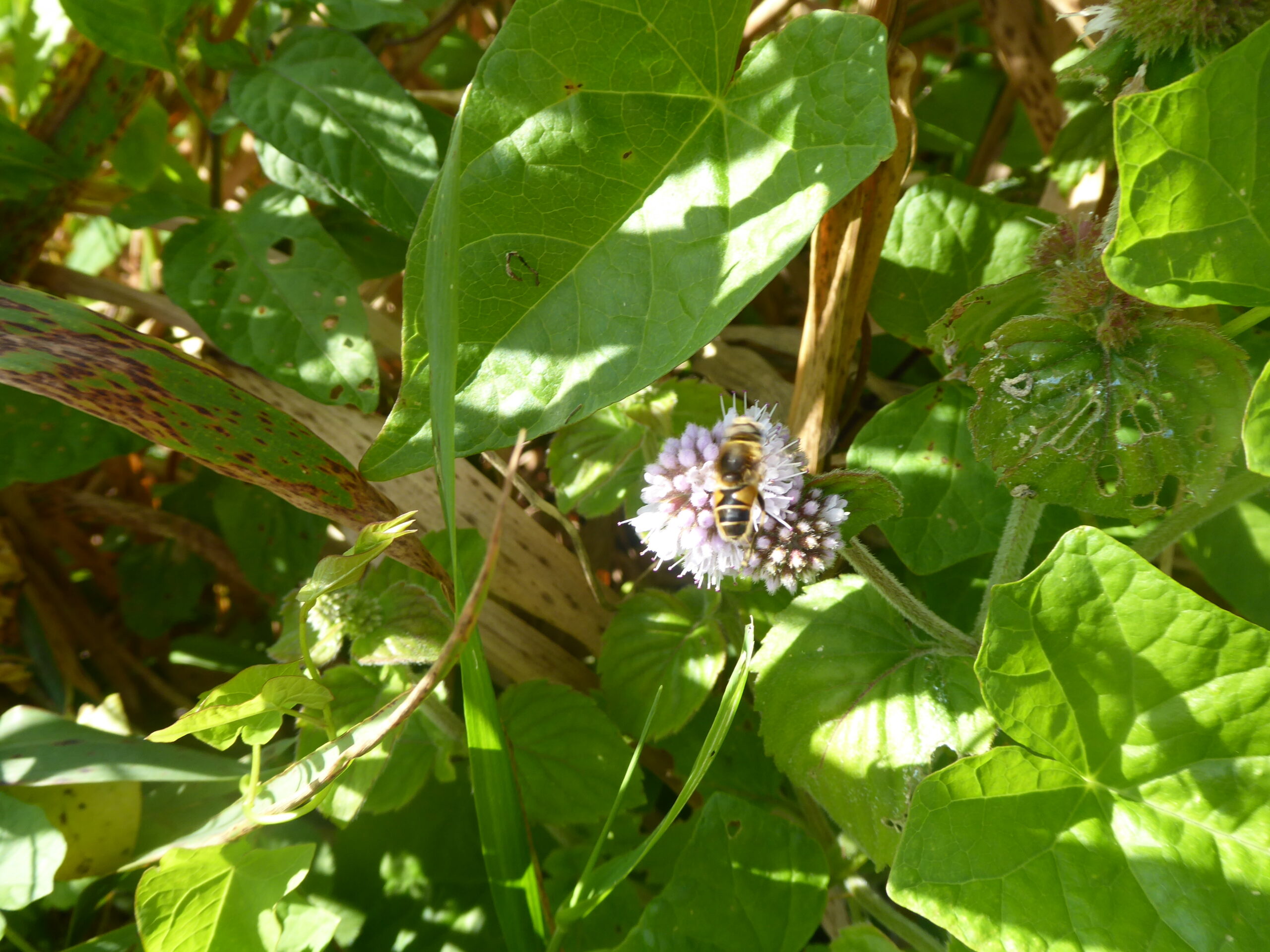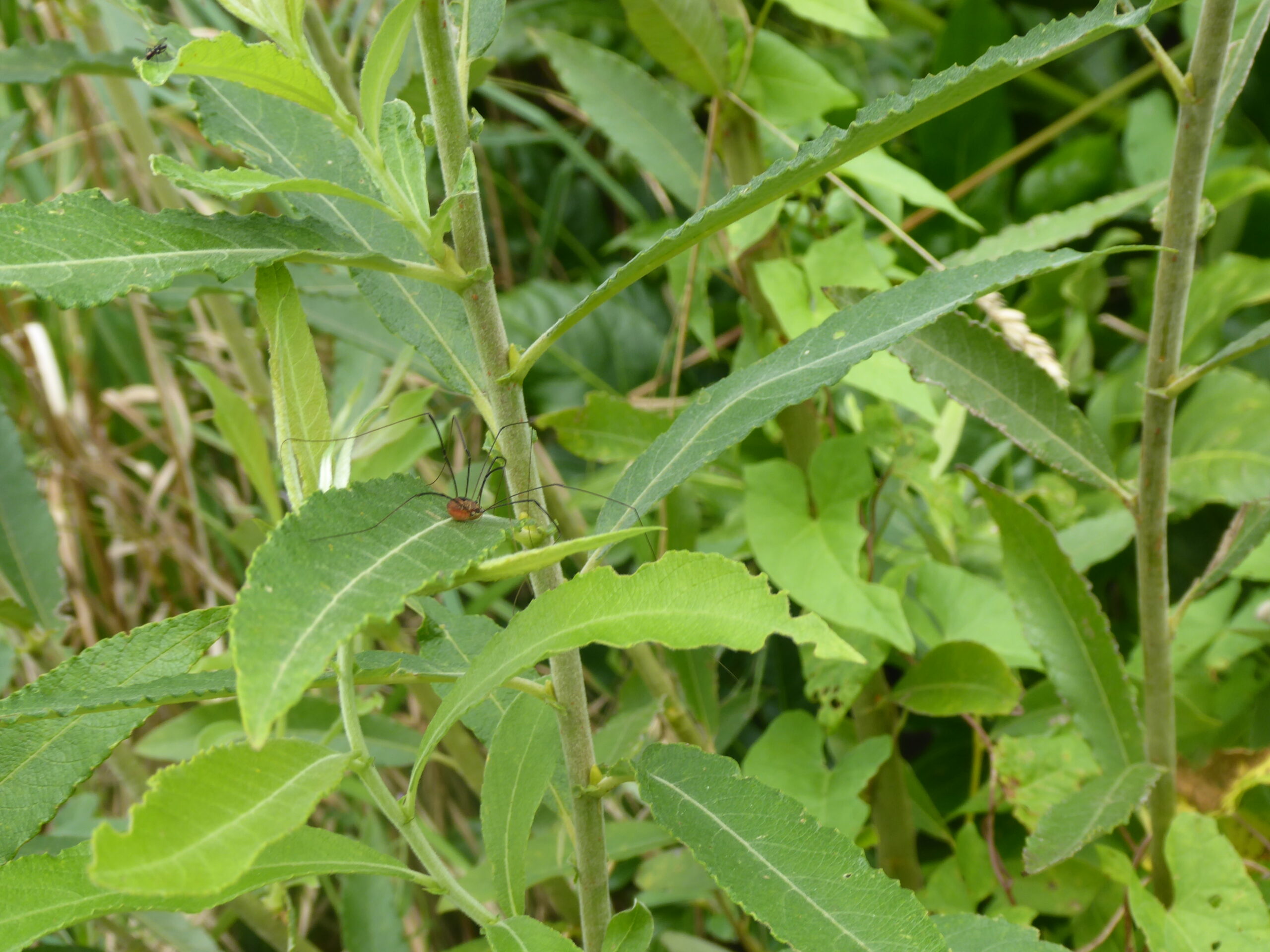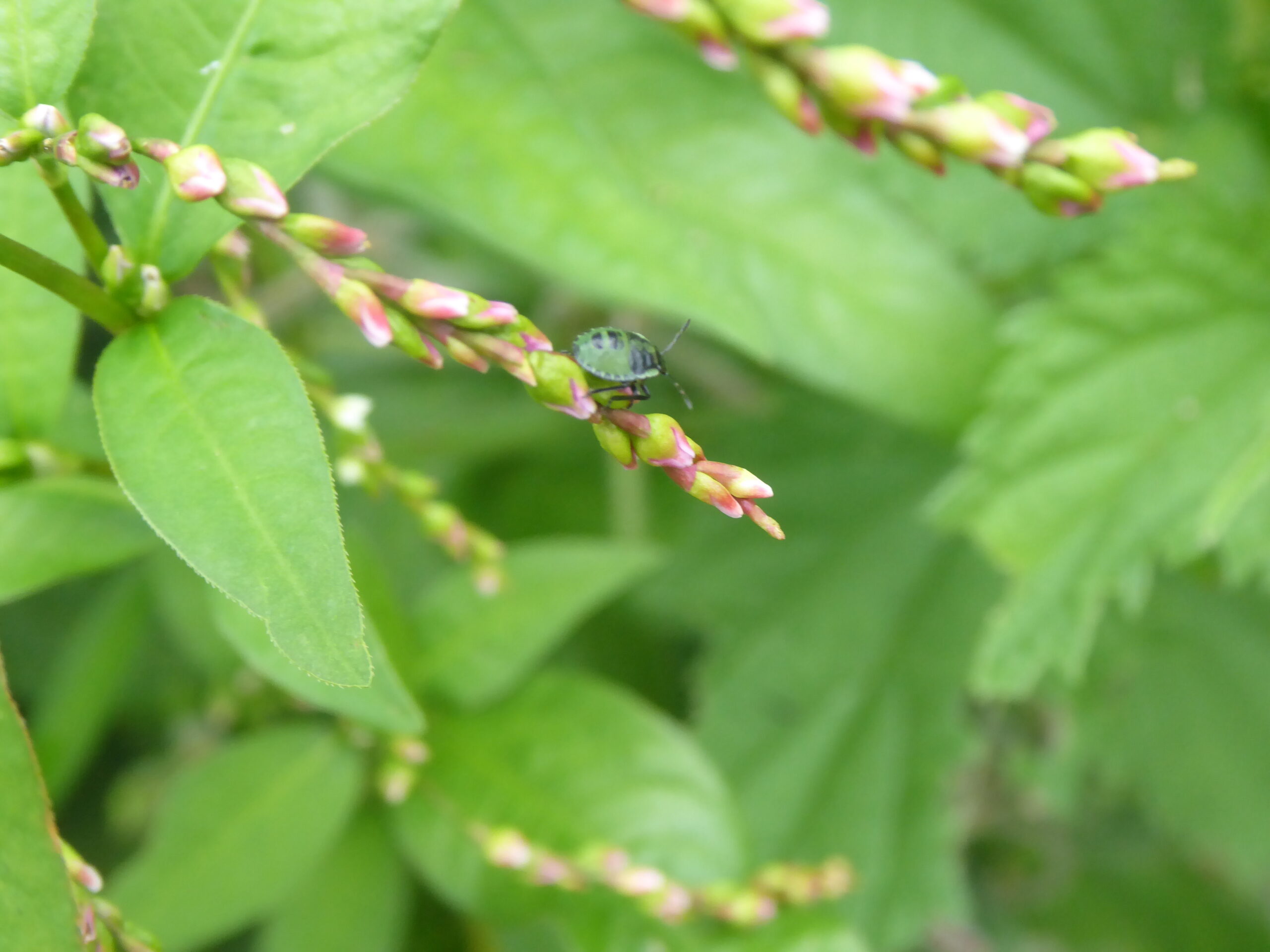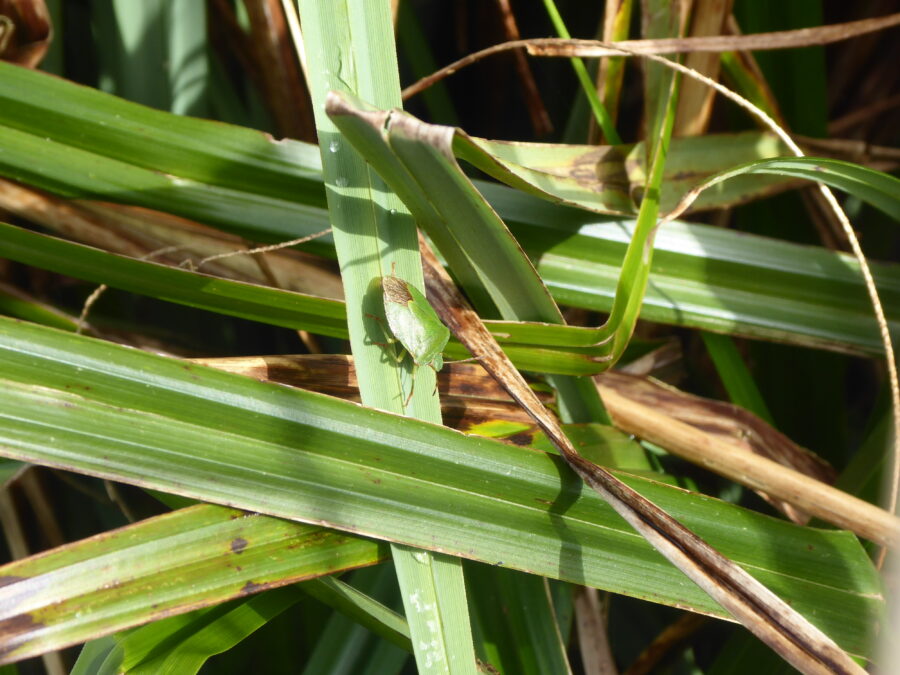Looking up to the alder treetops, I could see a swirl of midges scribbling in the sky and I couldn’t resist a photo. This is how I am recording all the tiny gnats and midges that will never pose for photoshoots – as one generic entry – at least until I get a better idea or opportunity.
And I loved that bit of clear blue in between all the mizzle and showers we have had lately!
Meanwhile, down at my feet moles have been busy digging their way round the watermeadow. We are never going to see an actual mole, but here is the evidence. We often have ‘evidence’ in the upper garden, too, and although they can be destructive, it’s a delight to know that moles are still around. I remember the school playing field studded with mole hills when I was at primary school but have rarely seen them since.
We wonder where the moles go in the winter, as they don’t hibernate. Instead they dig deeper into the ground below the frost and carry on eating earthworms until the spring when they build bigger chambers underground and rear their young.
But how does that work in a wetland habitat? Moles can swim and are adapted to live in a low-oxygen environment. Whilst they are not aquatic mammals, they can cope with a flooded tunnel, but will move to higher and drier ground if the ground becomes submerged.
